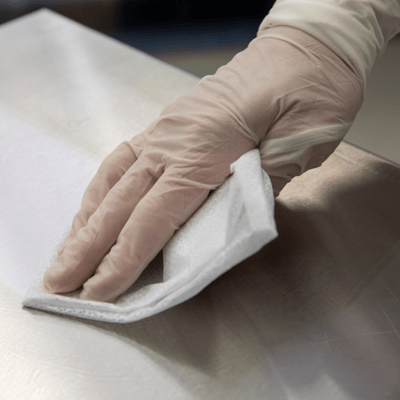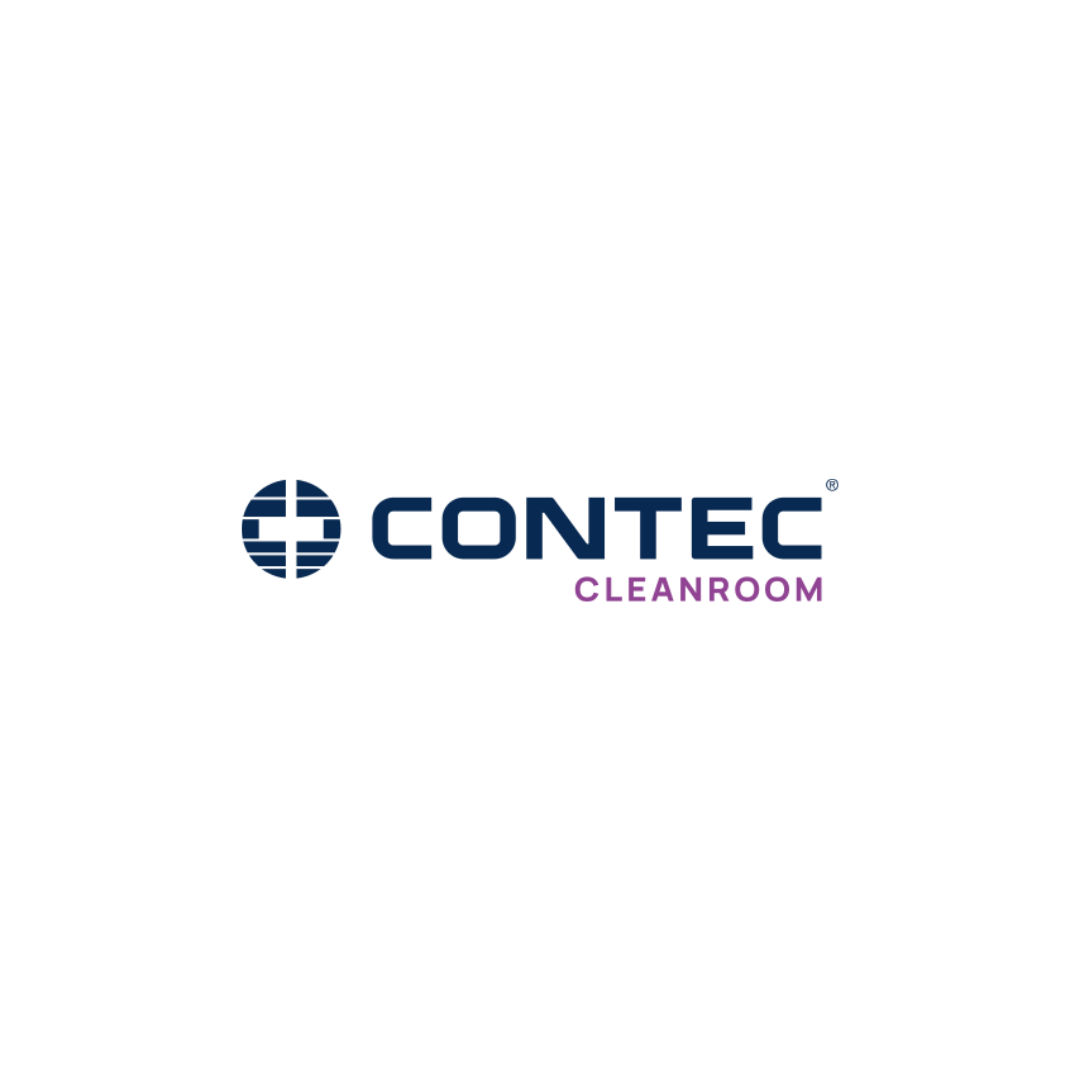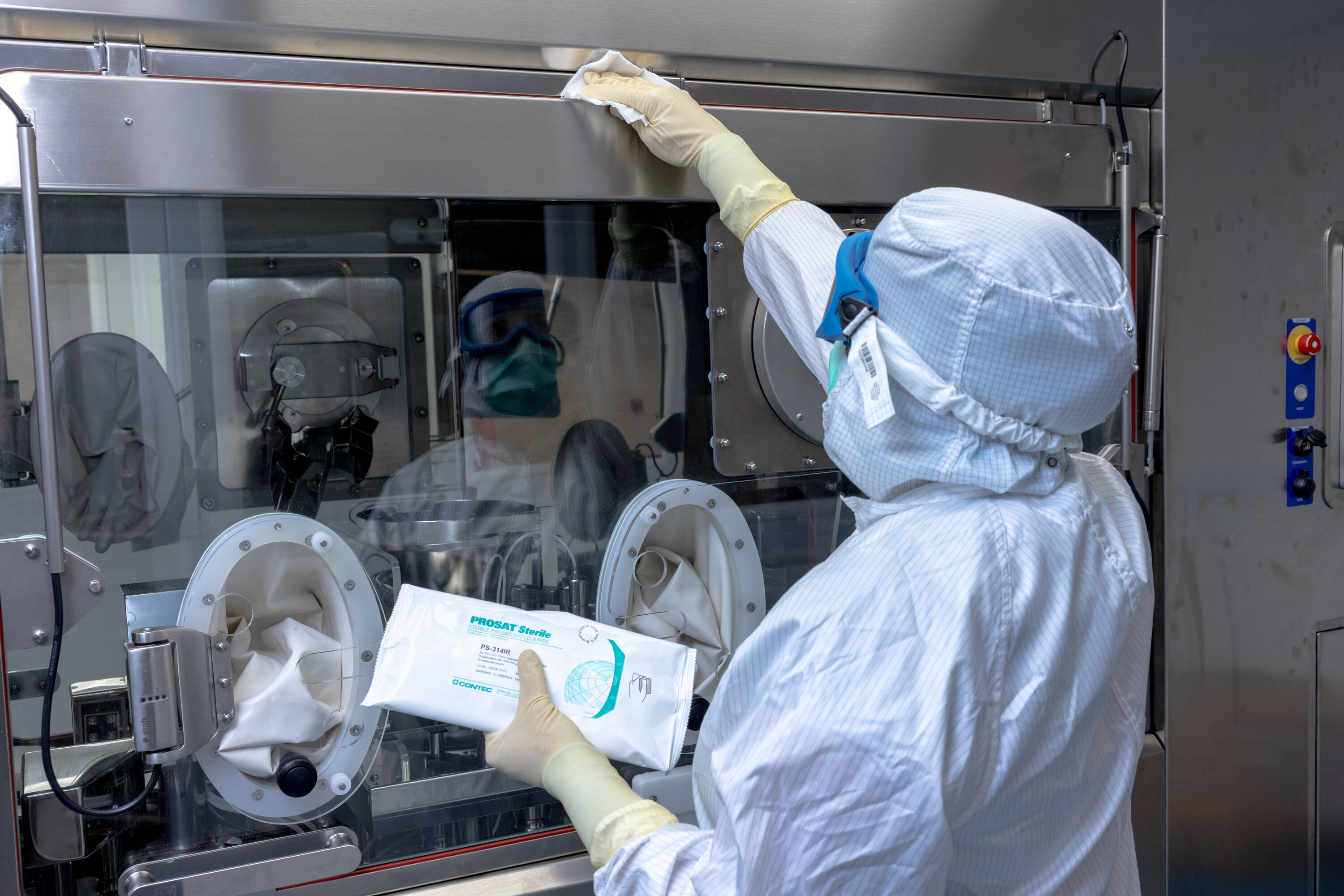Biosafety cabinets are the most critical environment in many cleanroom operations, particularly in pharmaceutical manufacturing and biotechnological processes. While the initial cleaning and disinfection of these systems are crucial, the often-overlooked step of residue removal is equally vital. This blog explores why residue removal is essential and how it is carried out effectively in cleanrooms to ensure the compliance of biosafety cabinets.

Why is Residue Removal Necessary?
Residue removal is a critical step in the cleaning and disinfection process for any life sciences cleanroom environment, including biosafety cabinets. While disinfectants are essential for killing microorganisms, they typically leave behind residues that can interfere with processes or even contaminate products.
- Preventing Contamination: residue left on surfaces can become a breeding ground for bacteria and other contaminants.
- Maintaining Functionality: Residues may interfere with the operation of sensitive instruments within the biosafety cabinet.
- Ensuring Compliance: Residue removal is mandated by regulatory guidelines to ensure the safety and efficacy of products.
How is Residue Removal Performed in Biosafety Cabinets?
The process of residue removal involves both specialized tools and strict adherence to consistent procedures.
- Choosing the Right Agents: Selecting residue-removal agents that are compatible with the biosafety cabinet materials is vital.
- Utilizing Proper Techniques: Specific wiping techniques, such as unidirectional overlapping strokes, and choosing appropriate cleaning tools are essential to remove residues while maintaining the integrity of the biosafety cabinet.
- Verification of Residue Removal: Techniques such as visual inspection, surface sampling, and chemical testing may be employed to ensure that all residues have been effectively removed.
The Impact of Proper Residue Removal
Proper residue removal has a profound impact on the overall efficiency, safety, and compliance of cleanroom facilities and biosafety cabinets.
- Enhanced Product Quality: Removing all residues ensures that no unexpected interactions or contaminations occur during processing or production.
- Increased Equipment Longevity: Properly cleaned and maintained biosafety cabinets will function properly and provide longer service life. are likely to function efficiently for a longer time.
- Building Trust with Regulators and Clients: Compliance with residue removal guidelines builds trust with regulatory bodies and clients who value adherence to quality standards.
The importance of residue removal after cleaning and disinfecting a biosafety cabinet in a cleanroom facility cannot be overstated. It's a fundamental part of the cleaning process. By understanding and implementing proper residue removal practices, facility operators and managers ensure that they maintain the highest levels of quality, functionality, and regulatory compliance. The significant step of residue removal is an essential best practice for cleanrooms.
Learn More about residue removal mitigation and management here.

.png)


.png)
